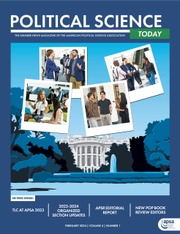Corruption is a problem everywhere in the world, but it can be particularly damaging where political institutions and legal rules are weak. Many of those who grow up in developing countries have either been required to pay a bribe to a police officer, tax collector, or other government agent, or know someone who has.
While corruption undermines development, particularly the effective provision of services, it can also facilitate a form of politics that is complex, costly, and distant from the individual citizen. State agents take advantage of these complexities and the low information among citizens to extract rents for their services. Civil society groups and international donors have responded by supporting anti-corruption campaigns to fight back against graft. But recent studies have suggested that awareness raising campaigns, especially, are ineffective at encouraging citizens to reject corruption.
Cheeseman and Peiffer offer a new test of the impact of anti-corruption messages using a bribery game in which players can win more money if they are willing to pay a bribe. Worryingly, they find that most messages about corruption made a majority of their participants more likely to offer a bribe. There was also some good news, however, as the study found that some messaging might not be as harmful. Citizens were more willing to resist corruption if they already perceived that corruption was not such a widespread problem and they were exposed to a particular message that emphasized that corruption represents the theft of the taxes paid by citizens.
Political psychology shows that messaging can shape political behavior, even when exposed citizens do not perceive messaging to be particularly influential. This logic has driven awareness raising campaigns aimed at fighting a number of social “bads” such as corruption, gender-based violence, and election violence. However, the existing studies evaluating the effect of anti-corruption campaigns have found that by priming citizens to the issue of widespread corruption they encourage rather than deter corrupt behavior. This is because by highlighting the problem, anti-corruption messaging reminds people of what a big, intractable problem it is. Instead of inspiring people to resist corruption, such messaging can make people lose hope that the system will ever change and even encourage them to go with the corrupt grain.
To better understand how this works, the authors tested five different messages about corruption in one of the fastest growing cities in the world— Lagos, Nigeria. Although Nigeria ranks 146th for control of corruption, the Lagos State Government has boosted efforts to increase taxation and provide better services to citizens. This makes it an ideal location to measure the impact of messages about taxes and political leaders on attitudes and behavior related to corruption. The authors recruited 2,572 respondents, representative of the Lagos population, and assigned them to six even groups. The groups included five types of exposure to anti-corruption messaging (the treatments), with messages emphasizing the widespread nature of corruption, religious leaders speaking out against corruption, successes the government had in fighting corruption, that corruption impacts on local communities and can be fought locally, and that corruption takes from tax revenue, and one group without exposure to anti-corruption messaging (the control or comparison). Respondents were then asked questions about their perceptions of corruption and anti-corruption efforts.

Some 1,200 participants also played a bribery game. The participants were given $5 to play and told another player received a similar amount somewhere else in the city. The participants had a choice to offer a third party a bribe of $1.50, an option they were told the other player did not have. If they offered the bribe, the participant would walk away with both their remaining $3.50 plus the other player’s $5, bringing their total gain to $8.50 but leaving the other player with nothing. If they chose not to bribe, each player would retain their $5. (In reality, there was no other player, but this was revealed to the participants only after they had played.) Designed in this way the game made it clear that by offering a bribe, participants were negatively impacting another person—the other player. This is often the case in real life, where a bribe can buy you quicker access to a service but at the expense of someone else getting bumped further back in the queue.

The authors find that exposure to messages about religious and government leaders in the fight against corruption, and about corruption being widespread increased the likelihood of paying a bribe. Exposure to localized messaging about corruption had no effect on the likelihood of paying a bribe.
To determine how prior beliefs about corruption moderate decisions to bribe, the authors divided their sample into pessimistic and non-pessimistic perceivers. This allowed them to capture whether respondents believed (pessimistic) or did not believe (non-pessimistic) corruption was an all-pervasive problem in Nigeria prior to receiving any messages. The results show that exposure to almost all anti-corruption messaging increased the likelihood of paying a bribe for pessimistic perceivers, but had no effect on non-pessimistic perceivers. Promisingly, when non-pessimistic perceivers were exposed to the taxation narrative— and only this message—they became less likely to pay a bribe in their game.
This finding suggests that all is not lost with anti-corruption campaigning. When messaging is framed to highlight corruption’s effects on personal finances in the form of taxes, and specifically targets those less convinced that corruption is pervasive, it may have the positive effect of decreasing the likelihood of paying a bribe. The challenges involved in pulling this off are not to be understated, however, because targeting messaging is difficult and costly. It is essential to move in this direction though—without it, awareness raising campaigns are likely to do more harm than good. ■
Cheeseman, Nic, and Caryn Peiffer. 2021. "The Curse of Good Intentions: Why Anti-Corruption Messaging Can Encourage Bribery" https://doi.org/10.1017/S0003055421001398 American Political science Review, 2021, 1–17.


